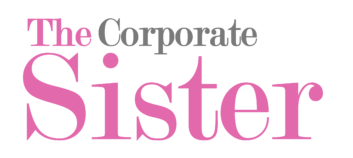
Back to (better) Work: How to Restructure the Way we Work as Working women and Moms
Get up, take care of the home, go to work, come back home, take care of the home and family, and do it all over again the next day… For many working women and moms, this is the song of dance we’ve been accustomed to for generations. Despite the advances towards gender equality and couple equity, many of which have been adversely affected, some even reversed with the COVID-19 pandemic, the song hasn’t improved much. If anything, its cadence has even increased, cumulating household, caregiving, and childcare responsibilities heaped on the minds, bodies and souls of women all across the US and the world at large. As a result, millions of women have exited the workforce, some due to lack of childcare support, others due to sheer burnout and exhaustion, most due to a virulent and urgent need to rethink and restructure the way of work as we know it…
The reality is, work as we traditionally know it, does not work for women and mothers. It never did…It wasn’t made to, after all. Work as we know it, even as it slowly seeks to morph into a more inclusive environment, was made for men with wives at home to support with the household, caregiving and childcare unpaid labor. Even as society’s advances made it easier for women to enter in and over time remain in the workforce, thanks to the advent of technological advances such as household appliances and childcare facilities, albeit insufficient, lessening the burden on women, significant challenges have and still remain.

While the COVID-19 pandemic was a wake-up call for many working women and moms, and society at large, shining the light on the tragic imbalances at the core of couple inequity and the general deepening gender inequality, it was also a signal of impending change. As the structure of work revealed the vulnerability of certain sectors mostly led and staffed by women, it also forcefully made way for more remote and hybrid arrangements. As a result, it’s become obvious that work can, and may well need to be, worked differently; that productivity is not necessarily tied to physical presence, flexibility is a working woman and mom’s ally, and lack of childcare is a crisis in and of itself. These factors, and many others combined, are leading a new discussion and thought leadership on how work should really be structured today to make room for more inclusive, diverse and equitable contributions and leadership.
For many, if not most, working women and moms, a familiar flame of struggle and progress has been re-ignited. It’s the same flame that prompted women to fight for employment outside of the home, to seek to enter careers only reserved to men, and to reject the notion of having to choose between family and career. Today, this familiar flame is seeking to burn bright over the inequalities and inequities still holding women back, and burn down the unfair vestiges of an antiquated childcare, caregiving and work structure.
As working women and moms, it’s also our prerogative to reflect on, discuss and implement the changes, at the micro and macro level, necessary for us to truly get back to work. Not the work we’ve known for decades, with its biases such as the maternal wall bias or performance review biases , ceilings and walls. Not the work that forces us to choose between family and career. Not the work that creates a societal chasm between genders, couples and families. Rather, it’s the work that strengthens us as it strengthens our families, communities and societies that we’re interested in getting back to. The work that recognizes women and moms as the legitimate other working half of society, with all the rights and privileges that entails. The work that is done on purpose, for a purpose, and with a purpose.
While many of these changes are to happen at a structural and foundational level, they also begin at the micro level through each and every one of us and how we choose to structure the work we do and the lives we live. It begins with:
- Reflection:
Historically, the traditional structure of work has created a somewhat rigid organization and assignment of responsibilities, privileges and processes. By not making room for flexibility, change and inevitable progress, and upholding the status quo, this traditional structure of work has contributed for a long time to muting the professional aspirations and desires of many a woman. As such, it has also discouraged the natural process of self-reflection that accompanies all human evolution, regardless of gender.
It’s this natural process of self-reflection that prompts us to continuously take the pulse of our own evolution, to ask ourselves what gifts and talents we ought to use for ours and others’ benefits, what capacity we can expand to. Through self-reflection, we can challenge assumptions and status quo, positioning ourselves to create the changes we, and others, need.
When was the last time you made an inventory of your skills, gifts and talents? When was the last time you asked yourself whether you were operating at your full capacity, or stifling your own growth, thus depriving others of its fruits too? When was the last time you wondered what it would take for you to operate on purpose and gain fulfillment in this season of your life?
- Planning:
Part of maintaining the status quo is about deliberately not changing or adjusting existing structures. When it comes to work, while many “quick” fixes have been implemented to attempt to remedy gender inequities, from increasing the number of women on boards to various gender-focused diversity initiatives, it’s the structural foundation that has to be addressed. I remember a good friend and colleague telling me years ago: “ The 9-to-5 is an antiquated relic, and will disappear someday”. As we navigate the post-COVID era, with the advent of remote and hybrid work, we’ve come across the realization that the structure of work can (and will) change without major repercussions.
This is where as working women and moms we can begin and continue to think about restructuring the way we work to our benefit, rather than putting up with work that runs opposite to our well-being, sanity and success. Re-imagining the way we work as women and moms entails not just performing a deep self, family and community assessment. It is also about making the often hard decisions required to get back to a different type of work. Some of these may require deciding on a change in schedules, a hybrid work arrangement, or a drastic change in employer or industry altogether.
- Making the Change:
Last but not least, getting back to work, albeit this time work that actually works for working women and moms, also requires implementing the necessary changes. Whether drastic changes or minor scheduling adjustments, the reality is, on working women and moms’ obstacle-laced paths, changes, even when critically necessary, constitute yet another obstacle. Add to it the fact that many, if not most changes related to women, from access to certain professions reserved to men to even being allowed to work after having children, were challenging and lengthy to come by, to say the least. As working women and moms stand at the core of the family, the community and the society, any structural change affecting working women and moms also affect the latter.
This is where making a structural work change as working women and moms, such as negotiating flexible work arrangements, creating support networks, and advocating for policy changes, goes further than simply taking on new habits, or even setting systems and processes. Making effective, long-term and significant structural changes to the way we work and live, from changing our schedules to creating the support networks we need, involves:
- Putting quality of life first: Determining and focusing on what constitutes our quality of life can help spot and pick the companies and businesses that offer more flexibility and well-being. It can also help in determining what needs to change both on the home and professional front.
- Fostering open communication in and outside of home: Open communication requires identifying and addressing the issues we face. For working women and moms, open communication when it comes to our needs whether related to maternity leave or childcare support, can help amplify our voices and bring about much needed change.
- Taking a stand and committing to long-term change: Making effective change demands having a long-term vision and commitment to it. What is the vision behind the change that needs to happen in our work and way of life? What is the “why” behind it, to fuel the commitment towards it? Realizing that some of these changes may well take more time than anticipated can also help keep us on track.
Overall, restructuring our work as a working women and moms to gain more purpose and fulfillment will require a similar struggle and progress than the women who have come generations before us. Yet, it’s a struggle and progress that also begins at the individual, family, community and societal level. One that requires reflection, planning and ultimately making the necessary changes.
How are you restructuring the way you work and live as a working woman and/or mom?
The Corporate Sis.













